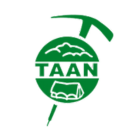Regd No: 3558717/81/82
+977 9851410929
01-5926629 info@nepaladventuretrail.com
01-5926629 info@nepaladventuretrail.com
✓ 20+ years of trekking expertise since 2005
✓ Best price guarantee for Nepal trekking packages
✓ Expert local guides and Sherpa team
✓ Complete safety equipment and emergency support
✓ Government-licensed trekking company






Embark on Nepal’s best trekking adventures with Nepal Adventure Trail, Nepal’s premier trekking company since 2005! Experience world-famous Nepal trekking tours 2025, including the legendary Everest Base Camp trek, scenic Annapurna Circuit trek, breathtaking Annapurna Base Camp trek, challenging Manaslu Circuit trek, and pristine Langtang Valley trek.
Our expert Nepal trekking packages feature experienced local guides who lead you through lush Himalayan forests, authentic Sherpa villages, and glacial rivers, delivering breathtaking mountain panoramas and cultural immersion. Perfect for all fitness levels, our guided Nepal trekking tours safely connect you with Nepal’s ancient Buddhist culture, warm hospitality, and welcoming mountain communities.
Choose Nepal Adventure Trail for your 2025 Himalayan adventure — where 20+ years of expertise, safety-first trekking, and government-licensed guides create unforgettable mountain experiences with competitive pricing and a price-matching guarantee!